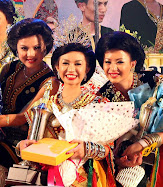
South Korean President Lee Myung-bak (L) listens to Defence Minister Kim Tae-young (2nd R) during the urgent security conference at the presidential Blue House in Seoul November 23, 2010.







Smoke rises from South Korea's Yeonpyeong island near the border against North Korea.
The surprise attack occured at a time when South Korean and North Korean athletes are competing for honour, in full sportmanships valour as a symbol of peace, at the 16th Asian Games in Guangzhou, China
After the Korean War ended in 1953, the South and North Korea are still technically at war. Naval clashes at disputed maritime borders were reported in the past, as shown in this news item reported by the world media on March 2010. (video above)
Reuters reported today on Tuesday, 23rd November 2010 that North Korea fired dozens of artillery shells at a South Korean island, killing two soldiers and setting dozens of houses ablaze.
It is one of the heaviest attacks on its neighbour since the Korean War ended in 1953.
The attack was condemned by the world including the US and the UK.
South Koreans watch the news on television showing smoke rising from Yeonpyeong Island after it was hit by dozens of artillery shells fired by North Korea, at Seoul railway station November 23, 2010.
AT LEAST 200 SHELLS
YTN news agency said at least 200 North Korean shells hit Yeonpyeong, which lies off the west coast of the divided peninsula near a disputed maritime border. Most landed on a military base there.
South Korea's military said two soldiers were killed in the attack, 17 were wounded and three civilians were also hurt. South Korean military returned the fire and sent a jet fighter to the area.
YTN showed pictures of plumes of smoke pouring from the island and quoted a witness as saying fires were burning out of control.
The attack comes as the reclusive state has been pressing regional powers to return to negotiations about its nuclear weapons programme and follows revelations at the weekend it is fast developing another source of material to make atomic bombs.
It also follows moves by iron leader Kim Jong-il to make his youngest son heir apparent to the family dynasty.
For decades, the Korean leadership has played a carefully calibrated game of provocations to win concessions from the international community and impress his own military. The risk is that the leadership transition has upset this balance and that events spin out of control.
South Korean President Lee Myung-bak, who has pursued a hard line with the reclusive North since taking office nearly three years ago, said a response had to be firm following the attack on Yeonpyeong island, just 120 km (75 miles) west of Seoul.
The two Koreas are still technically at war -- the Korean War ended only with a truce -- and tension rose sharply early this year after Seoul accused the North of torpedoing one of its navy vessels, killing 46 sailors.
"Houses and mountains are on fire and people are evacuating. You can't see very well because of plumes of smoke," a witness on the island told YTN Television before the shelling ended after about an hour.
China, the impoverished North's only powerful ally, was careful to avoid taking sides, calling on both Koreas to "do more to contribute to peace".
"China hopes that the relevant parties will do more to contribute to peace and stability in the region ... it is imperative now to resume the six-party talks," a spokesman for the Chinese Foreign Ministry, Hong Lei, told reporters.
Those talks on North Korea's nuclear weapons programme -- involving the two Koreas, China, Japan, Russia and the United States -- have long been on ice.
However, the reclusive North has more recently been pushing to resume the talks, which previously it has used to win massive aid in return for promises to end its weapons programme.
WON TUMBLES
News of the exchange of fire sent the won tumbling in offshore markets with the 1-month won down about four percent in NDF trading. U.S. 10-year Treasury futures rose and the Japanese yen fell.
It also rattled global markets, already unsettled by Ireland's debt problems and worries about riskier markets.
The South Korean central bank is holding an emergency meeting to assess the possible market impact of the shelling.
The attack comes just as a U.S. envoy is in Beijing on a tour of the region and is expected to ask China to use its influence to help tame North Korea.
Washington has branded the North a danger to the region and expressed concern Pyongyang would sell nuclear weapons technology to other states.
It has said it was ready to return to talks but wants to see more commitment to denuclearisation by the North beforehand.
The White House condemned the attack, telling the North to halt its "belligerent action" and saying it was committed to defend the South.
It has about 28,000 troops in South Korea, their combined forces facing an estimated one million North Korean soldiers who make up one of the world's biggest standing armies.
BRITAIN CONDEMNS NORTH KOREA'S ATTACK ON SOUTH KOREA
BRITAIN strongly condemned North Korea's attack on an island in South Korea today, 23rd November 2010.
Foreign Secretary William Hague urged Pyongyang to refrain from further attacks, which he described as “unprovoked”.
In a statement issued by the Foreign Office in London, Mr Hague said: “The UK strongly condemns North Korea’s unprovoked attack on the South Korean island of Yeonpyeong Island.
“Such unprovoked attacks will only lead to further tensions on the Korean Peninsula. We strongly urge North Korea to refrain from such attacks and adhere to the Korean Armistice agreement.
“I welcome South Korean president Lee Myung-bak’s call for restraint.”
The annoucnment came minutes after North Korea threatened to continue to launch strikes against South Korea if the country violates their disputed sea border ´even 0.001 millimeter.
North Korea’s supreme military command said that it would "launch merciless military retaliatory strikes."
The warning was carried by North Korea’s official Korean Central News Agency.
Military Strength of North Korea
According to Global Fire Power, North Korea as at 2008, has 1.17 million active military personells, 4.7 million active military reserves and 189,000 paramilitary units.
North Korean ARMY
Total Land-Based Weapons: 16,400
Tanks: 3,500 [2006]
Armored Personnel Carriers: 2,500 [2006]
Towed Artillery: 3,500 [2006]
Self-Propelled Guns: 4,400 [2006]
Multiple Rocket Launch Systems: 2,500 [2006]
Mortars: 7,500 [2006]
Anti-Aircraft Weapons: 11,000 [2006]
North Korean AIR FORCE
Total Aircraft: 1,778 [2006]
Helicopters: 612 [2006]
Serviceable Airports: 77 [2007]
North Korean NAVY
Total Navy Ships: 708
Merchant Marine Strength: 167 [2008]
Major Ports and Harbors: 12
Aircraft Carriers: 0 [2008]
Destroyers: 0 [2008]
Submarines: 97 [2008]
Frigates: 3 [2006]
Patrol & Coastal Craft: 492 [2006]
Mine Warfare Craft: 23 [2006]
Amphibious Craft: 140 [2006]
And as for South Korea, Global Power reports that it has 687,000 active military personells and 4.5 million active military reserve.
South Korean ARMY
Total Land-Based Weapons: 8,325
Tanks: 1,060 [2004]
Armored Personnel Carriers: 2,480 [2004]
Towed Artillery: 4,000 [2004]
Self-Propelled Guns: 500 [2004]
Multiple Rocket Launch Systems: 185 [2004]
Mortars: 6,000 [2004]
Anti-Tank Guided Weapons: 58 [2004]
Anti-Aircraft Weapons: 1,692 [2004]
South Korean AIR FORCE
Total Aircraft: 538 [2004]
Helicopters: 502 [2004]
Serviceable Airports: 150 [2007]
South Korean NAVY
Total Navy Ships: 85
Merchant Marine Strength: 812 [2008]
Major Ports and Harbors: 4
Aircraft Carriers: 0 [2008]
Destroyers: 6 [2004]
Submarines: 20 [2004]
Frigates: 9 [2004]
Patrol & Coastal Craft: 75 [2004]
Mine Warfare Craft: 15 [2004]
Amphibious Craft: 28 [2004]

































No comments:
Post a Comment